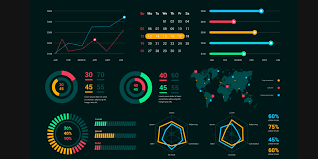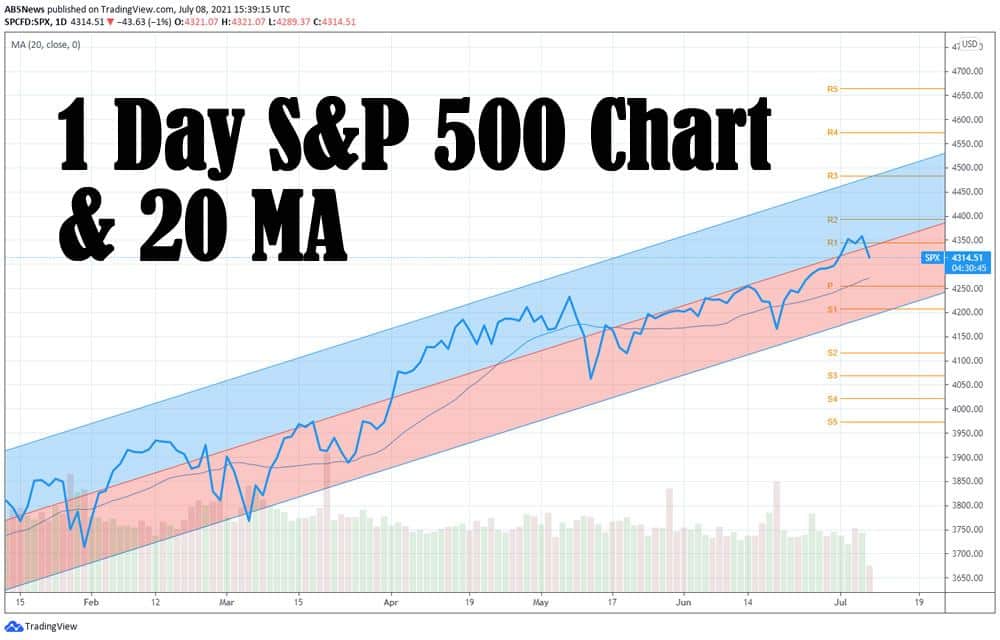Are you thinking about how2invest?
It’s great that you are thinking about making more money apart from your core source of income, whether it is a business or a job.
It’s better that you are planning to utilize investment, one of the most effective money-making options.
You might know that investment is the most used way of building wealth and saving for long-term goals like retirement in the USA. But that doesn’t mean you can take investment advice from anyone.
I know how overwhelming it can feel when I can not figure out how to invest and where to invest.
Well, when it comes to where to invest, there are more than enough options.
But…
Choosing the right one is essential.
That is why, I am here with a complete step-by-step guide on how2invest.
Table of Contents
- How2invest: Step By Step Guide
- Understand The Basic Of Investment
- 1. Asset Classes
- 2. Risk and Return
- 3. Compounding
- 4. Market Volatility
- Set Your Goals
- 1. Short-Term Goals
- 2. Long-Term Goals
- Diversify Your Portfolio
- Research, Research, Research!
- Choose The Proper Instruments
- Take Small Steps, Be Consistent
- Monitor Your Portfolio
- Develop A Portfolio
- Pick A Suitable Investment Advisor
- Be Careful Of The Risk
- Evaluate The Potential Of Returns
- Understand The Basic Of Investment
- Investment Strategies
- The Investment Options You Have
- Good Luck!
How2invest: Step By Step Guide
Every individual comes with a unique financial situation and different financial goals.
That is why the most suitable way of investing always depends on your personal preferences. Here, your present financial condition and future circumstances also play major roles.
So, having a detailed understanding of your expenses, incomes, liabilities, assets, responsibilities, and obviously, goals is crucial while you are developing an investment plan.
Here are the 5 steps that you can opt for when you are figuring out how2invest your money at this moment.
- Start with identifying your financial goals, feelings about risks, and timeframe.
- Make a decision on whether you want to go with a “do-it-myself” or you want a “manage it on my behalf” approach.
- There are some different types of investment accounts, such as IRA, education investment account, taxable brokerage account, and 401(k). Choose one to use.
- When you are done with picking the right investment account for yourself, it is time to open an account.
- Now, it is the time to pick a combination of investments, which perfectly match your given diversification and risk tolerance.
Understand The Basic Of Investment
As you are a beginner, how2invest can feel really daunting. But if you get a good hold of the core concept, things become easily manageable. So, let’s start with some essential terms in order to upgrade your knowledge.
1. Asset Classes
Asset classes are groups of financial stuff that act in similar ways when it comes to risk and how much money they make. The usual asset classes are stocks, real estate, bonds, and cash equivalents.
If you spread your investments across different asset classes, it can lower the amount of risk you’re taking.
2. Risk and Return
When you invest in things that could make a lot of money, there’s also a bigger chance of losing money.
Knowing how much risk you’re comfortable with is really important for deciding how2invest.
If you’re young, you might be okay with taking on more risk, but if you’re closer to retirement, you might prefer safer investments.
3. Compounding
Compounding is like a snowball rolling down a hill. When you reinvest your profits, you make even more money on top of what you started with. The longer you keep your investment in the market, the bigger this effect gets.
It’s like a snowball that keeps growing as it rolls downhill.
4. Market Volatility
Financial markets can be like roller coasters, with prices going up and down a lot.
It’s important to be patient and avoid making quick decisions because of these short-term changes. Stay calm and think things through before taking any action.
Set Your Goals
As they say, a life without a goal is like driving a car without its steering.
Just like that, setting achievable and clear goals for your investment is the base of your successful investment journey.
Your investment goals are going to shape your risk tolerance, investment strategy, along with time horizon.
1. Short-Term Goals
Now, you might be thinking, what’s the exact timeline to be it as short-time?
Well in case your goals are less than 5 years away, then it will be considered as a short-term goal.
For example, if you want to buy a house next year, Christmas piggy bank, or your emergency fund all these are considered short-term goals.
To be honest, if you are looking for short-term goals, I would personally recommend you not make any investments.
Still, there are some short-term options. But when it comes to short-term options the risk becomes more, so, you have to be extra careful.
2. Long-Term Goals
Just the way goals of less than 5 years are considered short-term goals, the goals that are at least 5 years are long-term goals. In most cases the goal is retirement.
But that’s not the only long-term goal, there are more like a downpayment of college tuition or your own house. Top investors and financial experts always advise us to go with long-term goals.
But just because the financials are into long-term goals that doesn’t mean you need to jump into that closing your eyes. Here are the things that will help you in establishing your investment objectives.
- First, look at your money situation – how much you make, spend, owe, and what you already have.
- Decide on short, medium, and long-term targets. The short-term can be an emergency fund, the medium-term might be buying a house, and the long-term could be planning for retirement.
- Attach specific money amounts to your goals. This will help you know how much to invest regularly to reach them.
- Consider how much risk you’re okay with. Age, financial responsibilities, and how you handle market changes play a part. Choose investments that match your risk comfort for a well-balanced approach.
Diversify Your Portfolio
The golden rule of how2invest is never to put all your money in a single space. Suppose you’ve invested all your money in a single stock. Now, in case that stock didn’t perform well, all your money will be gone.
That is why, it is always preferred to spread your investments across different industries and asset classes. This way, you’ll be able to mitigate the effect of individual asset volatility. Here is a guide for you on how you can diversify your investments effectively.
- Invest in different things like stocks, bonds, real estate, commodities, and cash. Each one behaves differently in the market, which lowers overall risk.
- Invest in different places around the world. This protects your money from problems in one country or region.
- Check on your investments regularly. If things get out of balance, adjust them to keep things on track.
- Avoid putting too much money into just one company or industry. Spread your money within each investment category too.
Research, Research, Research!
Thorough research along with due diligence are always needed when it comes to making informed decisions for your investments. Just because something is in trend and belongs to hot tips that doesn’t mean it is for you.
That is why, you should consider the following things.
- Learn about the products you want to invest in. Check how they performed in the past, their fees, risks, and who manages them.
- For stocks, look at a company’s financial health, how much they earn, what sets them apart, and the industry they’re in.
- Read financial news from trusted sources to get expert opinions and insights.
- Talk to experienced investors or a financial advisor. Learning from others can be really helpful.
Choose The Proper Instruments
Picking up the right investment vehicle, which aligns with your risk tolerance and goals is important. Here is a guide for you on how to pick the right instruments.
- Stocks: Buy shares in individual companies for big potential gains, but be ready for higher risk. Diversify by investing in different companies and industries.
- Bonds: Bonds are like loans that pay you back with regular interest. They are safer than stocks.
- Mutual Funds: Join forces with others to invest in a mix of stocks or bonds, managed by pros. It gives you instant diversification.
- ETFs (Exchange-Traded Funds): Similar to mutual funds but traded like stocks on exchanges.
- REITs (Real Estate Investment Trusts): Invest in real estate without owning property. Net income from properties they manage.
- Index Funds: Follow specific market indices for a wide range of investments with lower fees.
Take Small Steps, Be Consistent
Yes, there are individuals who deal with huge amounts, but that doesn’t mean there’s no point in investing small. For beginners, financial experts always advise starting small but being consistent with a little contribution at the same time.
Here are some things that you need to consider.
- Use Compounding: Even small amounts can grow big over time with compounding.
- Dollar-Cost Averaging: Invest a fixed amount regularly, no matter how the market behaves. It gets you more shares when prices are low and fewer when they’re high.
- Automate Investments: Make regular contributions easy by setting up automatic transfers from your bank to your investment account.
Monitor Your Portfolio
Investment doesn’t mean just putting your money in different forms of investment options and then forgetting about them.
You also need to monitor your portfolio in particular intervals of time. It will ensure that your portfolio is aligned with your specific risk tolerance and goals.
Are you thinking about how to do that just like you were worrying about how2invest? Don’t worry, I got your cover, below.
- Look at how your investments are doing regularly. You can do this every few months, every six months, or once a year.
- Keep up with financial news, the economy, and industry trends.
- If things change in your life, you might need to adjust your investment plans.
- Stick to your plan and avoid making snap decisions because of short-term market changes.
Develop A Portfolio
The investment world is all about developing a portfolio and for that you need proper planning along with some particular considerations of your investment goals. That is why, here I have prepared a guide for developing an attractive and obviously effective portfolio.
- Decide how much of your money goes into each type of investment based on your comfort with risk and what you want to achieve.
- Combine actively managed funds with low-cost index funds or ETFs to spread your risk.
- As your situation changes, make changes to your investments to keep the right balance.
Pick A Suitable Investment Advisor
Always remember that no one can know everything, especially when you are a newbie in the world of business. The market is fluctuating every day, every moment. Thus keeping up with whatever is happening in the market is indeed a heck.
Having a professional investment advisor is beneficial. That doesn’t mean you have to have an advisor, you can do it all but yourself but that will require a lot of work.
But, in case you’ve made up your mind on having an advisor here are some things you need to look for while choosing one.
- Make sure the advisor has the right certifications and lots of experience.
- Know how the advisor earns money, whether it’s fees or commissions.
- Look for feedback from other clients to see if the advisor is trustworthy.
Be Careful Of The Risk
The investment world is full of risks. So you have to be cautious. You must have proper knowledge and understanding of the common risks so that you can deal with them. Here are the most common risks, you need to stay aware of
- Market Risk: The market can go up or down, affecting how much money you make or lose.
- Liquidity Risk: Some investments are hard to turn into cash quickly without losing money.
- Inflation Risk: Over time, inflation can make your money buy less, lowering the value of your investments.
- Interest Rate Risk: When interest rates change, it can affect how much money you make from bonds and investments.
Evaluate The Potential Of Returns
While you are making your investment decisions, there is one more thing that is crucial, which is evaluating potential returns. Here are some factors that you need to keep in mind while assessing investment opportunities.
- Check how the investment has done in the past.
- Look into the company’s potential for growth and earning more in the future.
- Compare the risks involved with the potential rewards you could gain.
Investment Strategies
As you become more experienced, try advanced investment strategies for better returns. Here are some popular ones:
Value Investing: Find undervalued assets with growth potential using fundamental analysis.
Growth Investing: Look for stocks with high growth potential, where profits are reinvested for expansion.
Dividend Investing: Focus on stocks that pay regular dividends, favored by income-seeking investors.
Dollar-Cost Averaging: Invest a fixed amount regularly, regardless of market conditions.
Sector Rotation: Switch investments across sectors to benefit from emerging opportunities.
The Investment Options You Have
When you are looking for how2invest, I know you also want to know the investment options you have. I mean the different types of investment.
There are various investment options to suit different risk profiles and goals. Let’s look at some common types:
Stocks: Investing in company ownership can lead to significant returns.
Bonds: Government or corporate debt securities that offer regular interest payments and return the principal at maturity.
Real Estate: Investing in physical properties or REITs can generate passive income and property appreciation.
Commodities: Gold, silver, oil, and agricultural products can act as a hedge against inflation and currency fluctuations.
Cryptocurrencies: Bitcoin, Ethereum, and other digital currencies are alternative investments known for high volatility.
Good Luck!
I believe you get the necessary information you were looking for regarding how2invest. Always remember that investment goals and portfolios differ from person to person.
So, do not blindly follow anyone, though it is necessary to know what’s happening in the market and what the major investors are doing.
 Lifeyet News Lifeyet News
Lifeyet News Lifeyet News





